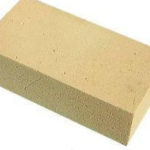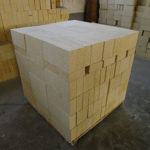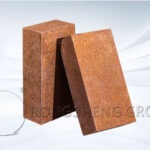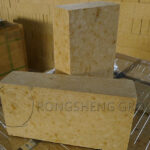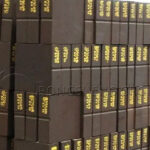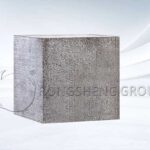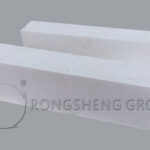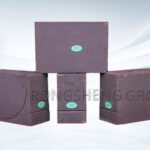The chemical composition of mullite runner bricks is mainly composed of mullite phase, in addition to a small amount of low melting point iron oxide. Various oxide components in runner bricks have different melting points. If the mass fractions of various components are different, the refractoriness of runner bricks is also different.
Introduction of Runner Bricks
The refractory brick types of runner bricks used in the die casting system include funnel bricks, injection pipe bricks, center bricks, direct flow bricks, flow steel tail bricks and mold bottom bricks. The raw material mineral composition of runner bricks is mainly Al₂O₃·2SiO₂·2H₂O and 6%~7% impurities. The impurities include potassium, sodium, calcium, titanium, and iron oxides. The firing process is mainly the process of continuous dehydration and decomposition of kaolinite to form mullite (3Al₂O₃·2SiO₂) crystals. Mullite crystal is the only stable form of aluminosilicate under high temperature, and its theoretical conversion rate is 87.64%. The SiO₂ and Al₂O₃ in the runner brick form a eutectic low-melting silicate with impurities during the firing process, which surrounds the mullite crystals.
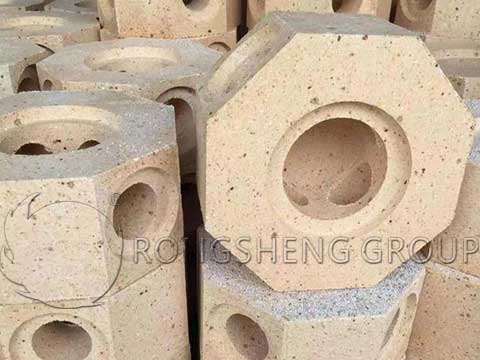
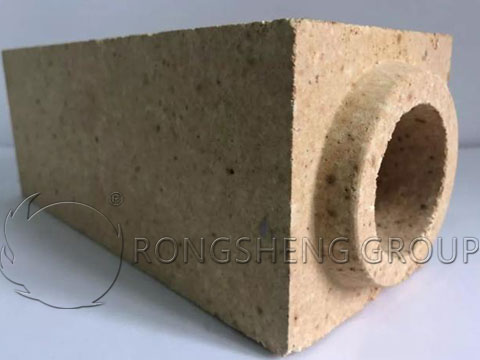
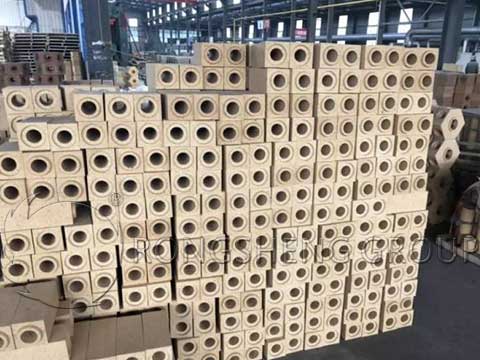
The Main Components of Runner Bricks
It can be seen from the inspection data that the main component of runner bricks is alumina, followed by silica, and also contains a small amount of iron oxide. The physical and chemical properties of runner bricks have a great relationship with the content of these main components. Changes in the main components will have a greater impact on the physical and chemical indicators of runner bricks.
The Main Damage Form of Runner Brick in the “Steel-Brick” Reaction
When the runner brick is in contact with molten steel, the interaction between molten steel and the refractory bricks materials includes the following aspects.
- One is the scouring of the molten steel on the refractory material, causing the refractory material to peel off, and the whole piece of refractory material falls into the molten steel. This is a physical process. Generally, this kind of damage is prone to occur when refractory materials have local instability points such as melting holes with low melting points.
- The second is that the components in the refractory materials, such as oxides, carbon, nitrides, etc., chemically react with the elements such as Al, Si, Mn, and Fe in the molten steel. The reaction interface is large, but the thickness of the chemical reaction layer is small, and this reaction runs through the entire contact between the refractory material and the molten steel.
Since the physical melting process often occurs before the chemical reaction process, the rate of physical melting loss is much faster than the rate of the chemical reaction. Therefore, it can be considered that the main form of damage caused by the contact between runner bricks and molten steel is physical melting.
The Composition of the Mineral Phase Formed in the High-Temperature Reaction Process of the Runner Brick
From the perspective of thermodynamics, in the process of contact between molten steel and runner bricks, various oxides in the runner bricks always tend to react to complex oxides with low melting points. In the process of the runner brick contacting and reacting with the high-temperature molten steel, complex compounds are continuously generated in the reaction layer of the runner brick. When the reaction temperature of the molten steel is higher than the melting point of the complex oxides, some complex oxide liquid phases will be generated in the reaction layer of the runner brick. In addition, these complex oxides in the liquid phase will be generated in the reaction interface layer and be engulfed in the molten steel by the flowing molten steel.
Conclusion
(1) The main damage that occurs during the contact between the runner brick and the molten steel is the physical melting process. The oxide decomposition reaction interface layer is thin and the reaction speed is slow. The melting point of various oxides in the runner brick and the corresponding mass fraction jointly determine the liquidus temperature of the reaction between the runner brick and the molten steel.
(2) When the runner brick and the molten steel undergo an interface reaction, the reaction form is to generate a single oxide compound from multiple individual oxides. And the lower the melting point of the complex oxide, the greater the reaction kinetics for the formation of this complex oxide. The more the mass fraction of individual oxides, the easier it is for this oxide to undergo compound reactions.

